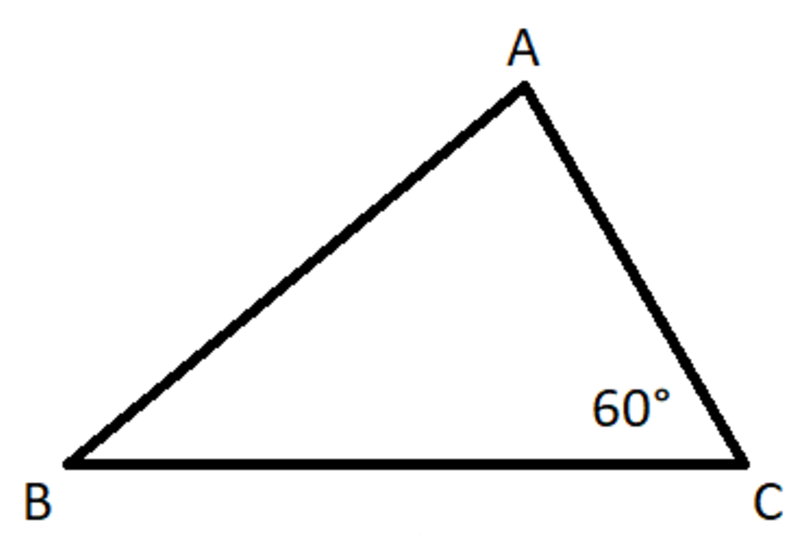Inradius known, side unknown

In △ A B C , A C = 7 and ∠ A C B = 6 0 ∘ . Find the length of B C so that the inradius of △ A B C is 2 .
The answer is 6.859.
This section requires Javascript.
You are seeing this because something didn't load right. We suggest you, (a) try
refreshing the page, (b) enabling javascript if it is disabled on your browser and,
finally, (c)
loading the
non-javascript version of this page
. We're sorry about the hassle.
2 solutions
Let B C = a , A C = b = 7 , and A B = c . By cosine rule , we have c 2 = a 2 + b 2 − 2 a b cos 6 0 ∘ = a 2 − 7 a + 4 9 . The area of △ A B C , [ A B C ] = 2 1 a b sin 6 0 ∘ = 4 7 3 a . And [ A B C ] = 2 r ( a + b + c ) = a + 7 + c , where r = 2 is the inradius. Therefore,
4 7 3 a ( 4 7 3 − 1 ) a − 7 ( ( 4 7 3 − 1 ) a − 7 ) 2 ⎝ ⎛ ( 4 7 3 − 1 ) 2 − 1 ⎠ ⎞ a 2 − ( 2 4 9 3 − 2 1 ) a ⟹ a = a + 7 + c = c = c 2 = a 2 − 7 a + 4 9 = 0 = ( 4 7 3 − 1 ) 2 − 1 2 4 9 3 − 2 1 ≈ 6 . 8 6 Since a > 0
The area of △ A B C is A = 2 1 ⋅ 7 ⋅ x ⋅ sin 6 0 ° = 4 7 3 x .
By the law of cosines on △ A B C , A B = x 2 + 7 2 − 2 ⋅ x ⋅ 7 ⋅ cos 6 0 ° = x 2 − 7 x + 4 9 .
The semiperimeter of △ A B C is therefore s = 2 1 ( x + 7 + x 2 − 7 x + 4 9 ) .
The relationship between the area A , the inradius r , and the semiperimeter s is A = r s . Therefore, 4 7 3 x = 2 ⋅ 2 1 ( x + 7 + x 2 − 7 x + 4 9 ) , which solves to x = 8 3 1 1 2 + 2 6 4 3 ≈ 6 . 8 5 9 .